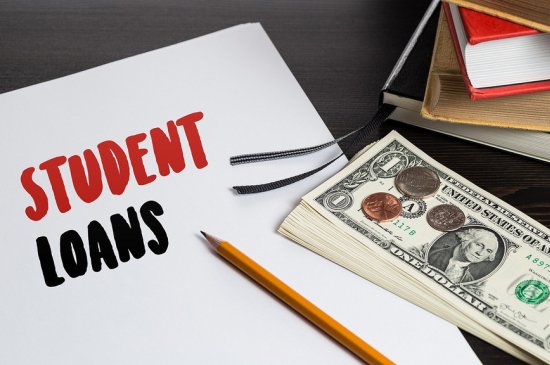Aggressive Government Action On Student Loan Defaults: A Borrower's Guide

Table of Contents
Understanding the Severity of Student Loan Default
Student loan default occurs when you fail to make payments on your federal student loans for a specific period (typically 270 days). The consequences of default are far-reaching and significantly impact your financial well-being. The process of delinquency leading to default typically involves several stages, starting with missed payments and progressing to increasingly serious actions. Ignoring these warnings can lead to devastating financial consequences.
- Wage garnishment: A portion of your paycheck can be legally seized to satisfy your debt.
- Tax refund offset: The government can intercept your tax refund to apply it to your outstanding student loan debt.
- Credit score impact: Defaulting severely damages your credit score, making it difficult to obtain loans, credit cards, or even rent an apartment in the future.
- Difficulty obtaining loans or credit cards: A severely damaged credit score makes obtaining future credit nearly impossible.
- Legal action: The government may take legal action, including lawsuits and wage garnishments, to recover the debt.
Aggressive Collection Tactics Employed by the Government
The government employs various aggressive collection tactics to recover defaulted student loans. These methods are becoming increasingly sophisticated, leveraging technology to track down and pursue borrowers. The process can be relentless and intimidating for those who are already struggling financially.
- Private collection agencies: The government often contracts with private collection agencies to pursue defaulted loans. These agencies are known for their aggressive collection tactics.
- Lawsuits and court judgments: The government can file lawsuits against borrowers, resulting in court judgments and further legal actions.
- Garnishment of Social Security benefits: In certain circumstances, a portion of your Social Security benefits can be garnished to repay your defaulted student loans.
- Seizure of assets: In extreme cases, the government may seize assets such as bank accounts or property to recover the debt. This is a last resort but a real possibility.
- Negative impact on credit reports: A default will remain on your credit report for seven years, significantly hindering your ability to secure loans, rent property, and obtain employment in the future.
Identifying and Preventing Student Loan Default
Preventing student loan default requires proactive planning and management of your finances. By understanding your repayment options and taking responsibility for your debt, you can significantly reduce the risk of default and maintain your financial health.
- Creating a realistic budget: Track your income and expenses carefully to determine how much you can afford to pay towards your student loans each month.
- Exploring repayment plan options: Understand the different repayment options available, including standard, extended, and income-driven repayment plans. Income-driven repayment plans can adjust your monthly payments based on your income and family size.
- Contacting your loan servicer for assistance: If you're struggling to make your payments, contact your loan servicer immediately. They may be able to offer assistance programs or modify your repayment plan.
- Consolidating loans: Consolidating multiple student loans into a single loan can simplify repayment and potentially lower your monthly payments.
- Seeking professional financial advice: A financial advisor can help you develop a comprehensive plan to manage your student loan debt effectively.
Rehabilitation and Consolidation Options
If you've already defaulted on your student loans, there are still options available to you. Rehabilitation and consolidation can help you get back on track and avoid further aggressive government action.
- Steps to rehabilitate a defaulted loan: Rehabilitation involves making on-time payments for a period of time (usually nine to ten months) to reinstate your loans to good standing.
- Eligibility requirements for rehabilitation: You must meet specific requirements to be eligible for loan rehabilitation.
- Consolidation options and their implications: Consolidation combines multiple loans into one, potentially simplifying repayment and lowering your monthly payment. However, it might extend the repayment period and potentially increase the total interest paid.
- Potential drawbacks of consolidation: Carefully consider the terms of the consolidation loan before proceeding, as it may not always be the best option.
Conclusion: Taking Control of Your Student Loan Debt
The aggressive government action on student loan defaults underscores the severity of the situation and the importance of proactive debt management. Understanding the potential consequences of default, the various collection tactics employed by the government, and the available resources for preventing and resolving defaults is crucial. Don't wait until aggressive government action impacts your finances. Take control of your student loan debt today by exploring repayment options, contacting your loan servicer, and seeking professional financial advice if needed. Avoid student loan default and manage your student loan debt effectively by taking immediate action.

Featured Posts
-
 Top 3 Reasons To Choose The Ultraviolette Tesseract Electric Scooter
May 17, 2025
Top 3 Reasons To Choose The Ultraviolette Tesseract Electric Scooter
May 17, 2025 -
 Giants Vs Mariners Whos On The Il April 4 6
May 17, 2025
Giants Vs Mariners Whos On The Il April 4 6
May 17, 2025 -
 Aggressive Government Action On Student Loan Defaults A Borrowers Guide
May 17, 2025
Aggressive Government Action On Student Loan Defaults A Borrowers Guide
May 17, 2025 -
 Juste Jocyte Palieka Vilerna Karjeros Etapo Pabaiga
May 17, 2025
Juste Jocyte Palieka Vilerna Karjeros Etapo Pabaiga
May 17, 2025 -
 Istrazivanje Ujedinjenih Arapskih Emirata Savjeti I Informacije Za Putnike
May 17, 2025
Istrazivanje Ujedinjenih Arapskih Emirata Savjeti I Informacije Za Putnike
May 17, 2025
